Description
In the demanding arena of turbine operations, where split-second signal accuracy can mean the difference between seamless power generation and an abrupt shutdown, engineers face the persistent challenge of safeguarding critical I/O paths against noise, vibration, and environmental extremes. The GE IS200TTURH1CCC S1DF00Z emerges as a vital turbine terminal board, directly addressing the need for robust signal interfacing in high-stakes industrial automation setups. Consider a gas turbine fleet in a peaking power plant: speed sensors pulse erratic data amid thermal cycling and electromagnetic interference, risking false trips or overlooked overspeeds that cascade into multimillion-dollar outages. This board solves that by delivering isolated, conditioned connections for sensors, actuators, and protection modules, ensuring signal reliability without introducing latency. It’s indispensable in process control environments where modular integration demands quick swaps during maintenance windows, or in retrofits of legacy Speedtronic systems striving for TMR redundancy to meet SIL-rated safety thresholds. By honing in on the engineer’s priority of fault-tolerant data flow, the GE IS200TTURH1CCC S1DF00Z cuts through the complexity of field wiring, allowing teams to maintain high reliability for I/O signals while scaling for variable loads. In steam turbine applications, for instance, it becomes essential during high-vibration startups, bridging raw transducer outputs to core controllers without compromising diagnostic granularity. This isn’t merely hardware addition; it’s a strategic enabler for system stability, reducing the engineering hours spent on custom shielding or recalibration. For those assessing options in turbine control architectures, the GE IS200TTURH1CCC S1DF00Z aligns perfectly with goals like minimized downtime in 24/7 operations, offering a plug-and-play pathway to enhanced process control that adheres to industry regs without overhauling the entire stack. Whether bolstering a single-unit site or an integrated grid, it empowers proactive monitoring, turning potential vulnerabilities into fortified assets.
- IS200TTURH1CCC S1DF00Z
- IS200TTURH1CCC S1DF00Z
The GE IS200TTURH1CCC S1DF00Z functions as a dedicated terminal interface within GE’s Speedtronic Mark VI and Mark VIe frameworks, channeling turbine-specific signals like speed pulses and protection triggers from field devices into the broader I/O architecture. Envision it mounted in a VME rack: it terminates wiring from passive magnetic speed sensors and RTDs, applies onboard isolation to filter transients, and routes cleaned analog/digital data via ribbon cables to upstream boards such as the VTUR for primary protection logic. Positioned at the field’s edge in the automation stack, it sits between raw transducers and the control layer, preventing ground loops that plague unbuffered setups. In TMR configurations, it supports triple-redundant paths, synchronizing inputs across channels to vote out discrepancies in real time—crucial for averting single-failure propagations. Diagnostics integrate natively, with status relays that ping the HMI for alerts on open circuits or overvoltages, enabling remote troubleshooting without panel access. Pair it with I/O packs like the IS200RTD or servo drivers in the same assembly, and it feeds into the QNX-based controller core, handling protocols such as IONet for seamless handoffs to plant DCS overlays. What makes it approachable is its no-fuss adaptability; configuration draws from ToolboxST software, mapping terminals without deep code dives, which trims commissioning from days to hours. For hybrid systems blending Modbus gateways, the board’s edge conditioning ensures protocol fidelity, dodging data corruption in mixed-vendor environments. Ultimately, it slots into hierarchical designs—sensor tier for acquisition, terminal layer for conditioning, and supervisory for orchestration—fostering resilient networks that adapt from standalone drives to fleet-wide synchronization. This integration not only simplifies fault isolation but also paves the way for upgrades, as field-upgradable firmware keeps it synced with evolving turbine dynamics.
| Specification | Details |
|---|---|
| Model Number | IS200TTURH1CCC S1DF00Z |
| Brand | GE (General Electric) |
| Type | Turbine Terminal Board (TTUR) |
| Input Voltage | 24 V DC nominal |
| Operating Temp Range | -30°C to 70°C |
| Mounting Style | Rack-mounted in VME enclosure |
| Dimensions | 10.5 in × 5.25 in × 1.2 in |
| Weight | 0.8 lb |
| Interface/Bus | Ribbon cable to VTUR; terminal blocks for field wiring |
| Compliance | CE, UL, RoHS; compatible with IEC 61508 |
| Supported Protocols | IONet, Modbus (via system) |
| Typical Power Draw | 8 W |
Opting for the GE IS200TTURH1CCC S1DF00Z yields immediate dividends in operational resilience, as its isolation circuitry—tuned for turbine transients—keeps signals pristine through dust-choked enclosures or humid shafts, translating to fewer nuisance alarms and steadier output curves. In a live scenario, this means a wind farm enduring gust-induced vibrations where unprotected boards might jitter, but here, consistent data flow sustains predictive maintenance cycles, potentially extending run hours by 15% without added sensors. It eases integration burdens by standardizing terminal layouts, so your crew reroutes field cables in under an afternoon, slashing retrofit costs and accelerating ROI on Mark VIe expansions.
Performance consistency follows suit, with low-latency paths that lock in overspeed detection under 10 ms, ensuring protective trips fire cleanly even as loads spike—vital for grid-tied plants chasing ancillary services revenue. Maintenance overhead drops noticeably; built-in relays self-report wiring faults to the toolbox, letting technicians prioritize high-value tasks over blind hunts. Engineered for endurance in cyclic duty, it wards off thermal drift with conformal coatings, promising years of drift-free operation that outlasts off-brand alternatives. For planners weighing scalability, this board’s TMR readiness means layering redundancy without redesign, future-proofing against regulatory shifts while trimming long-term TCO. In essence, the GE IS200TTURH1CCC S1DF00Z transforms terminal handling from a vulnerability into a strength, delivering the uptime and compliance that keep complex automation ecosystems not just running, but thriving.
Deploying the GE IS200TTURH1CCC S1DF00Z shines in gas turbine setups within power plants, where it terminates speed and vibration probes to feed real-time data into protection loops, upholding critical system uptime amid 50°C heat and EMI from nearby generators. In these process control environments, its signal conditioning proves key for fast data cycles during ramp-ups, preventing trip cascades that could black out a substation. Turn to steam turbine drives in petrochemical refineries, and it interfaces hydraulic servos and flame detectors, ensuring safe sequencing in corrosive, high-pressure zones where continuous uptime borders on mission-critical. Here, the board’s isolation thwarts ground faults from saline air, maintaining I/O signal integrity for seamless interlocks. Offshore oil platforms represent another stronghold, with the GE IS200TTURH1CCC S1DF00Z anchoring sensor arrays against saltwater spray and seismic jolts, enabling remote diagnostics that minimize crew exposure. Across these used in power plants and process control environments, it excels in harsh conditions, bolstering high reliability for turbine fleets chasing efficiency gains without sacrificing safety margins.
IS200VTURH2B – Primary turbine protection board for overspeed and vibration monitoring in Mark VI systems. IS200RTDH1CBB – Resistance temperature detector interface complementing TTUR for thermal inputs. IS200TRLYH1BGF – Relay termination module for actuator control in redundant setups.
IS200TSVCH1ADC – Servo valve controller paired with TTUR for hydraulic positioning.
IS200ACLAH1A – Application control layer board for algorithm execution alongside terminals.
DS200TCCBG1A – Core controller card upgrade path for enhanced processing in Mark VIe.
IS200PDIAH1A – Discrete input module for expanding field I/O with TTUR.
When preparing to rack the GE IS200TTURH1CCC S1DF00Z, verify enclosure compatibility first—Mark VIe VME slots demand precise alignment to avoid bus shorts, and cross-check ribbon cable lengths against VTUR offsets for strain-free runs. Power sequencing is non-negotiable; bring up the 24 V DC rail post-field wiring to sidestep inrush spikes that could latch false diagnostics. Firmware alignment via ToolboxST should precede hot-swaps, ensuring handshake with the controller’s version to prevent boot loops. For ongoing upkeep, monthly visual sweeps of terminal blocks catch loose ferrules early, especially in vibratory installs—retorque to 1.5 Nm if needed. Biannual functional loops, injecting test pulses from a calibrator, confirm isolation ratios without turbine spin-downs; log any attenuation over 5% for trending. In salty or dusty locales, a soft-bristle clean of contacts every quarter preserves contact resistance below 100 mΩ. These routines, grounded in field realities, keep the board’s contributions steady, empowering your ops team to sideline surprises and zero in on performance tuning.

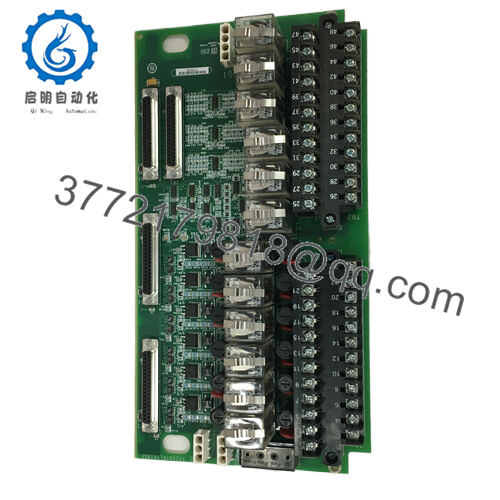
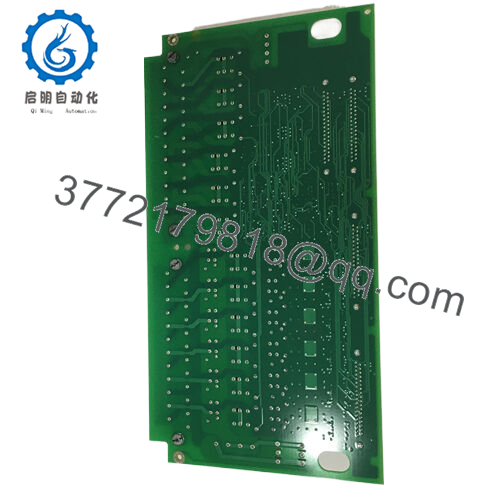
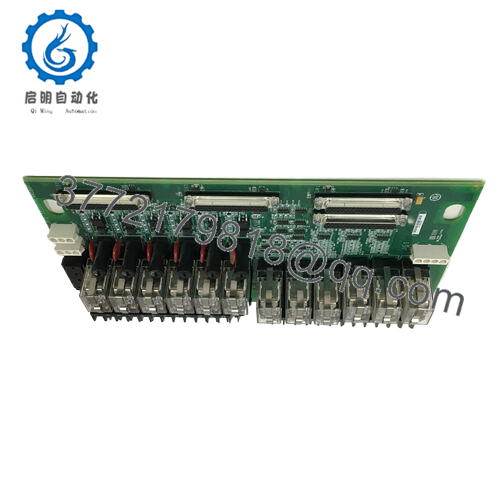
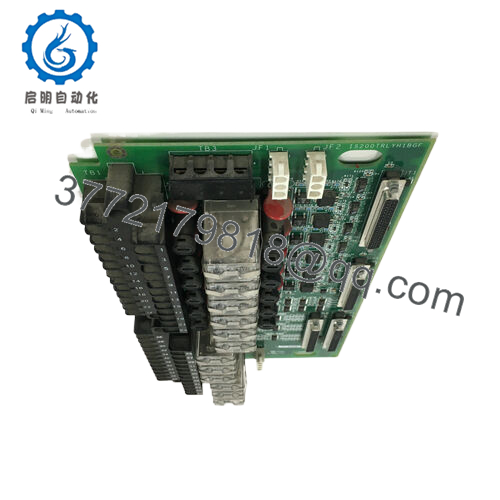
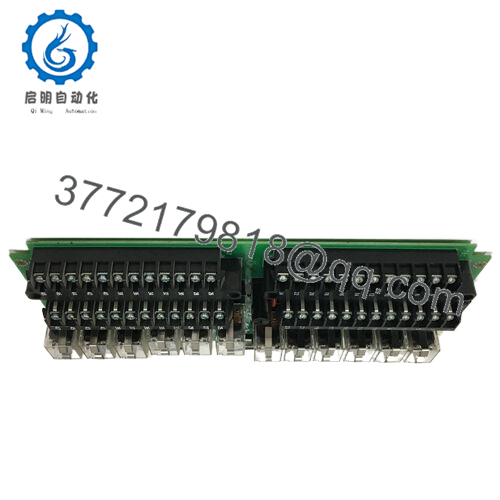
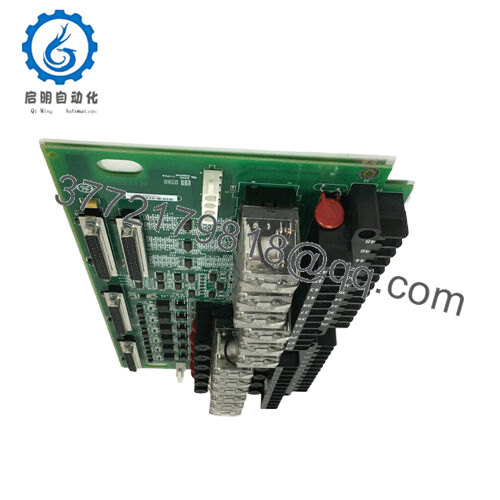
 WhatsApp: +86 16626708626
WhatsApp: +86 16626708626 Email:
Email:  Phone: +86 16626708626
Phone: +86 16626708626


